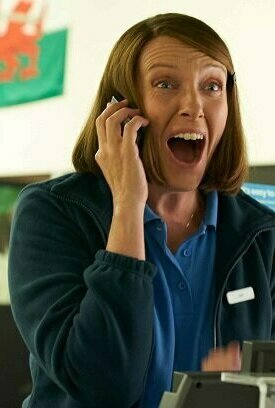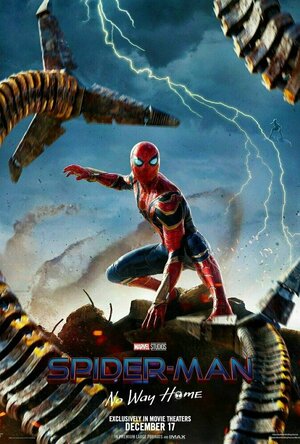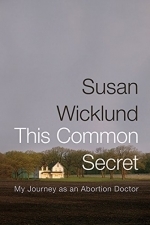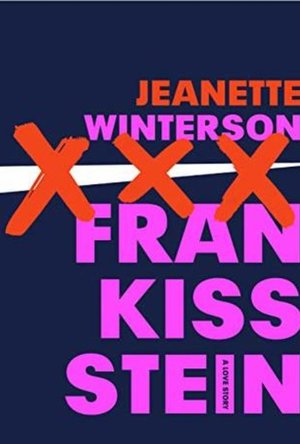Search
Search results
Bob Mann (459 KP) rated Dream Horse (2021) in Movies
Jun 12, 2021
Ensemble cast (1 more)
Cinematography of racing scenes
My lovely lovely horse fails to fully engage
An extraordinary story of ambition against all the odds - based on a true story - will Dream Alliance fulfil the town's dreams, or will it all end in tears?
Positives:
- Toni Collette! Without her powerful acting presence at the heart of the piece, I think the movie would have died in a ditch. As for her Welsh accent I (as an Englishman) thought it was pretty good: on my 'Welshometer', using the scale of Richard Burton as a 10 to RDW's "Doctor Dolittle" as a 1, I'd give Ms Collette about an 8. The illustrious Mrs Movie Man (as a Welsh lady) was less impressed, but found her "tolerable" when mixed with the other Welsh-born actors!
- And what a wonderful supporting cast of well know names from all our yesterdays. Just so great to see the great Siân Phillips ("I, Claudius"), Lynda Baron ('Nurse Gladys' from "Open all Hours"), Peter Davison ("Doctor Who") and Nicholas Farrell ("Chariots of Fire") in the cast. It was also (as is traditional in these "true stories") for the actual people to appear alongside their acting counterparts in the end titles: Howard Davies in particular seemed to be chuffed to bits to be singing alongside Damien Lewis!
- Hats off to cinematographer Erik Wilson and Chris Bates (the "drone operator"), for some impressive shots. The camera angles from the turf-pumping racing scenes are very impressive.
Negatives:
- How did it make me feel? Very little at all. Which is a problem. The movie is so utterly predictable that I saw every element of the story play out way before it did. Did this happen in real life? In which case, that's annoying that life was so unrealistically predictable in its ups and downs!
- Elements of the story also felt formulaic: from the token comedy cranky old bloke (Karl Johnson) to Jan's brooding father-with-a-grudge. This latter element seems unnecessarily bolted onto the plot: poorly worked through and pretty superfluous.
Summary Thoughts on "Dream Horse": This is a feature debut for welsh-born Euros Lyn, most familiar (as a peculiar name) for popping up in the end credits of TV shows such as "Doctor Who", "Torchwood" and "His Dark Materials". And, as a great supporter of UK films, I really wanted to like this one. But it just didn't do it for me. It's also unfortunate that some of the subject material makes it unsuitable for the 6-to-8 year old horse fanatics... this is no "International Velvet".
I've seen some social media comments from people who adore the movie. And, to be clear, it's NOT a bad movie. I just personally didn't connect with me. Just goes to show that cinema really is 'horses for courses' sometimes!
(For the full graphical review, please check out the One Mann's Movies review here - https://bob-the-movie-man.com/2021/06/11/dream-horse-%e2%99%abi-want-to-shower-you-in-sugar-lumps-and-ride-you-over-fences%e2%99%ab/ . Thanks).
Positives:
- Toni Collette! Without her powerful acting presence at the heart of the piece, I think the movie would have died in a ditch. As for her Welsh accent I (as an Englishman) thought it was pretty good: on my 'Welshometer', using the scale of Richard Burton as a 10 to RDW's "Doctor Dolittle" as a 1, I'd give Ms Collette about an 8. The illustrious Mrs Movie Man (as a Welsh lady) was less impressed, but found her "tolerable" when mixed with the other Welsh-born actors!
- And what a wonderful supporting cast of well know names from all our yesterdays. Just so great to see the great Siân Phillips ("I, Claudius"), Lynda Baron ('Nurse Gladys' from "Open all Hours"), Peter Davison ("Doctor Who") and Nicholas Farrell ("Chariots of Fire") in the cast. It was also (as is traditional in these "true stories") for the actual people to appear alongside their acting counterparts in the end titles: Howard Davies in particular seemed to be chuffed to bits to be singing alongside Damien Lewis!
- Hats off to cinematographer Erik Wilson and Chris Bates (the "drone operator"), for some impressive shots. The camera angles from the turf-pumping racing scenes are very impressive.
Negatives:
- How did it make me feel? Very little at all. Which is a problem. The movie is so utterly predictable that I saw every element of the story play out way before it did. Did this happen in real life? In which case, that's annoying that life was so unrealistically predictable in its ups and downs!
- Elements of the story also felt formulaic: from the token comedy cranky old bloke (Karl Johnson) to Jan's brooding father-with-a-grudge. This latter element seems unnecessarily bolted onto the plot: poorly worked through and pretty superfluous.
Summary Thoughts on "Dream Horse": This is a feature debut for welsh-born Euros Lyn, most familiar (as a peculiar name) for popping up in the end credits of TV shows such as "Doctor Who", "Torchwood" and "His Dark Materials". And, as a great supporter of UK films, I really wanted to like this one. But it just didn't do it for me. It's also unfortunate that some of the subject material makes it unsuitable for the 6-to-8 year old horse fanatics... this is no "International Velvet".
I've seen some social media comments from people who adore the movie. And, to be clear, it's NOT a bad movie. I just personally didn't connect with me. Just goes to show that cinema really is 'horses for courses' sometimes!
(For the full graphical review, please check out the One Mann's Movies review here - https://bob-the-movie-man.com/2021/06/11/dream-horse-%e2%99%abi-want-to-shower-you-in-sugar-lumps-and-ride-you-over-fences%e2%99%ab/ . Thanks).
Ivana A. | Diary of Difference (1171 KP) rated Virgin River (Virgin River, #1) in Books
Feb 3, 2020
<a href="https://amzn.to/2Wi7amb">Wishlist</a>; | <a
<a href="https://diaryofdifference.com/">Blog</a>; | <a href="https://www.facebook.com/diaryofdifference/">Facebook</a>; | <a href="https://twitter.com/DiaryDifference">Twitter</a>; | <a href="https://www.instagram.com/diaryofdifference/">Instagram</a>; | <a href="https://www.pinterest.co.uk/diaryofdifference/pins/">Pinterest</a>;
#1 <a href="https://www.goodreads.com/review/show/3099359251">Virgin River</a> - ★★★★
<img src="https://i0.wp.com/diaryofdifference.com/wp-content/uploads/2020/01/VirginRiverBlogTourBanner.jpg?resize=512%2C1024&ssl=1"/>;
I am so thankful to the team at Mills & Boon for letting me a part of this amazing blog tour. It is an honour, and a pleasure! <a href="https://diaryofdifference.com/2020/01/29/virgin-river-by-robyn-carr-blog-tour/ ">Click HERE to read the first chapter!</a>
<img src="https://diaryofdifference.com/wp-content/uploads/2020/01/Book-Review-Banner-18-1024x576.png"/>;
<i>When recently widowed Melinda sees an advert for a midwife in the quiet town of Virgin River, she decides this is the perfect place to escape her heartache and to revitalise the nursing career she loves.
However, her dreams are shattered as soon as she arrives. The cabin is uninhabitable, the roads are treacherous and the local doctor has nothing to do with her. But when a tiny baby is abandoned on a front porch, Mel needs to make a decision.
Helped by a local barman and former marine, Jack Sheridan, Mel has to face her past, and realises that there may be a future in Virgin River after all. </i>
<i><b>First Impression</b></i>
I don’t usually go for the drama romance stories. But I do love a bit of new town girl, and I also love watching medical shows, despite knowing close to nothing about medicine. Grey’s Anatomy, The Resident, Doctor House, The Good Doctor, ER, etc. fans - please let yourselves known! :)
I loved this book. It has a very good vibe about if from the beginning until the end. First of all, I fell in love with Virgin River. A lovely quiet place, with amazing selfless people living in it. I would love to live in a town like that! The author described the place so well, that it made me feel like I was there, in the pub, in the doctor’s office, by the river…
<i><b>Characters</b></i>
We found ourselves to have Mel as a main character, followed by Jack. However, we had a lot of side characters, who actually played a crucial role in the development of Mel and Jack and their story.
<i><b>Mel is a city girl, born and raised.</b></i>
Always lived in big cities, most recently in L.A. and she is used to all the poshy posh stuff that come along with such a lifestyle. She was married to Mark, an emergency doctor, who recently passed away. We never get to meet Mark, but we get to know him through Mel’s memories of him.
Wanting and needing change, she sells everything and moves to Virgin River, a promising quiet town, where she can start again. But things don’t go as planned. They never do. When struggling with challenges, she has to find a way to cope with her pain, then learn how to live with it, so she can move on and be happy in life.
<i><b>Then we have Jack, who owns a bar in Virgin River, and who is the person that helps everyone around.</b></i>
When Mel arrives, he is determined to make her stay and show her that this place is not so bad after all. But as a former marine, he also has his demons, and as much as he will help Mel, he also needs her to help him get over his pain as well.
From the side characters, I really loved Doc, the sassy old doctor, Preacher, Jack’s friend from the marines and Joey, Mel’s sister. Even though I hated Joey at the beginning, she started to grow on me as time passed by.
Very interesting story, a lot of dramatic events that change our characters and teach them something. The plot was predictable in the sense that I knew there would be a love story between Jack and Mel, but it was still adorable and cute to read how both of them grow by each other.
<i><b>The Netflix Show</b></i>
You might have heard, but now Virgin River also has a TV show as well. My plan was to read and watch them simultaneously, and I did watch the first few episodes. I love the show, and I will definitely continue watching. However, the plot is changed a lot and it is quite different from the book, so I suggest you read the book first before watching the TV show.
<i><b>Have you read this book? Have you read something similar? I would love to read your thoughts. :) </b></i>
<a href="https://amzn.to/2Wi7amb">Wishlist</a>; | <a
<a href="https://diaryofdifference.com/">Blog</a>; | <a href="https://www.facebook.com/diaryofdifference/">Facebook</a>; | <a href="https://twitter.com/DiaryDifference">Twitter</a>; | <a href="https://www.instagram.com/diaryofdifference/">Instagram</a>; | <a href="https://www.pinterest.co.uk/diaryofdifference/pins/">Pinterest</a>;
<a href="https://diaryofdifference.com/">Blog</a>; | <a href="https://www.facebook.com/diaryofdifference/">Facebook</a>; | <a href="https://twitter.com/DiaryDifference">Twitter</a>; | <a href="https://www.instagram.com/diaryofdifference/">Instagram</a>; | <a href="https://www.pinterest.co.uk/diaryofdifference/pins/">Pinterest</a>;
#1 <a href="https://www.goodreads.com/review/show/3099359251">Virgin River</a> - ★★★★
<img src="https://i0.wp.com/diaryofdifference.com/wp-content/uploads/2020/01/VirginRiverBlogTourBanner.jpg?resize=512%2C1024&ssl=1"/>;
I am so thankful to the team at Mills & Boon for letting me a part of this amazing blog tour. It is an honour, and a pleasure! <a href="https://diaryofdifference.com/2020/01/29/virgin-river-by-robyn-carr-blog-tour/ ">Click HERE to read the first chapter!</a>
<img src="https://diaryofdifference.com/wp-content/uploads/2020/01/Book-Review-Banner-18-1024x576.png"/>;
<i>When recently widowed Melinda sees an advert for a midwife in the quiet town of Virgin River, she decides this is the perfect place to escape her heartache and to revitalise the nursing career she loves.
However, her dreams are shattered as soon as she arrives. The cabin is uninhabitable, the roads are treacherous and the local doctor has nothing to do with her. But when a tiny baby is abandoned on a front porch, Mel needs to make a decision.
Helped by a local barman and former marine, Jack Sheridan, Mel has to face her past, and realises that there may be a future in Virgin River after all. </i>
<i><b>First Impression</b></i>
I don’t usually go for the drama romance stories. But I do love a bit of new town girl, and I also love watching medical shows, despite knowing close to nothing about medicine. Grey’s Anatomy, The Resident, Doctor House, The Good Doctor, ER, etc. fans - please let yourselves known! :)
I loved this book. It has a very good vibe about if from the beginning until the end. First of all, I fell in love with Virgin River. A lovely quiet place, with amazing selfless people living in it. I would love to live in a town like that! The author described the place so well, that it made me feel like I was there, in the pub, in the doctor’s office, by the river…
<i><b>Characters</b></i>
We found ourselves to have Mel as a main character, followed by Jack. However, we had a lot of side characters, who actually played a crucial role in the development of Mel and Jack and their story.
<i><b>Mel is a city girl, born and raised.</b></i>
Always lived in big cities, most recently in L.A. and she is used to all the poshy posh stuff that come along with such a lifestyle. She was married to Mark, an emergency doctor, who recently passed away. We never get to meet Mark, but we get to know him through Mel’s memories of him.
Wanting and needing change, she sells everything and moves to Virgin River, a promising quiet town, where she can start again. But things don’t go as planned. They never do. When struggling with challenges, she has to find a way to cope with her pain, then learn how to live with it, so she can move on and be happy in life.
<i><b>Then we have Jack, who owns a bar in Virgin River, and who is the person that helps everyone around.</b></i>
When Mel arrives, he is determined to make her stay and show her that this place is not so bad after all. But as a former marine, he also has his demons, and as much as he will help Mel, he also needs her to help him get over his pain as well.
From the side characters, I really loved Doc, the sassy old doctor, Preacher, Jack’s friend from the marines and Joey, Mel’s sister. Even though I hated Joey at the beginning, she started to grow on me as time passed by.
Very interesting story, a lot of dramatic events that change our characters and teach them something. The plot was predictable in the sense that I knew there would be a love story between Jack and Mel, but it was still adorable and cute to read how both of them grow by each other.
<i><b>The Netflix Show</b></i>
You might have heard, but now Virgin River also has a TV show as well. My plan was to read and watch them simultaneously, and I did watch the first few episodes. I love the show, and I will definitely continue watching. However, the plot is changed a lot and it is quite different from the book, so I suggest you read the book first before watching the TV show.
<i><b>Have you read this book? Have you read something similar? I would love to read your thoughts. :) </b></i>
<a href="https://amzn.to/2Wi7amb">Wishlist</a>; | <a
<a href="https://diaryofdifference.com/">Blog</a>; | <a href="https://www.facebook.com/diaryofdifference/">Facebook</a>; | <a href="https://twitter.com/DiaryDifference">Twitter</a>; | <a href="https://www.instagram.com/diaryofdifference/">Instagram</a>; | <a href="https://www.pinterest.co.uk/diaryofdifference/pins/">Pinterest</a>;
Chris Sawin (602 KP) rated Spider-Man: No Way Home (2021) in Movies
Dec 18, 2021
Willem Dafoe (2 more)
The on-screen bickering between characters.
The Doc Ock, Doctor Strange, and villainous team-up action sequences.
The humor doesn't always land. (2 more)
Peter's idiotic logic.
Lizard is supremely underutilized.
Riding the Nostalgia Train
Spider-Man: No Way Home picks up immediately after the events of Spider-Man: Far From Home. Quentin Beck (Jake Gyllenhaal) has revealed to the world that Peter Parker (Tom Holland) is Spider-Man. The world is torn in thinking that Peter is either still a hero or behind the drone attacks on London like Beck stated before his death.
Peter is now in a relationship with MJ (Zendaya) while Ned (Jacob Batalon) tags along as the third wheel more than the guy in the chair. As the three attempt to get into MIT and other colleges, MJ and Ned are punished for being associated with Peter. Feeling guilty, Peter takes it upon himself to contact Doctor Strange (Benedict Cumberbatch), who eventually agrees to perform a spell that would make everyone forget that Peter Parker is Spider-Man. However, Peter’s motor mouth and constant need to change Strange’s spell botches it and ends up opening the multiverse.
Early on, the humor in Spider-Man: No Way Home is lacking and a little lame. Much of the film rides on Peter’s relationship with MJ. Peter, MJ, and Ned have become inseparable in the film thanks to the events of Homecoming, Far From Home, Infinity War, and Endgame. Nearly everything boils down to them making decisions as a trio even when Peter is out there as Spider-Man. The humor in the film doesn’t really find its footing until the villains come along and even then it starts off pretty rough (making fun of the Otto Octavius name in the trailer is a prime example).
Peter’s solution to all of these villains invading his universe from their own is pure stupidity. The desire to do what’s best for someone’s well being is there and you understand why Peter is so adamant about going in the direction that he does. However, he has the opportunity to end all of this early on with little to no repercussions other than some structural damage that he is able to repair in one night.
Peter chooses to change the fate of these villains with the best intentions and suffers for it. In a way, it’s inevitable as it factors in to and is motivation for who Peter Parker and Spider-Man are as essentially one heroic character. “It’s what they do,” as they say several times in the film. That doesn’t mean you have to swallow it as something a supposed genius and one of Marvel’s smartest minds would conjure up though.
Next to the surprises the film has in store for first time viewers, the villains are arguably the highlight of the film. Peter’s fight with Doctor Octopus (Alfred Molina) on the bridge is nearly on par with the Spider-Man/Doc Ock fight on the train from Spider-Man 2. Willem Dafoe is also still Spider-Man’s greatest and most sinister adversary as Norman Osborn/The Green Goblin two decades later.
Dafoe’s one stipulation for returning to the franchise was that he would be allowed to do all of his own stunts even at 66 years old; he believes it all factors in to his performance and it shows. You feel sympathy for Norman and admire his brilliance, but he’s plagued with this gushingly nefarious and uncontrollable alternate personality. With that reverberating laugh and amazing facial expressions, Dafoe literally steals the film every time he’s on screen.
The bickering in the film results in some of the most entertaining sequences in the film. There’s at least two instances, one between all of the villains when they’re all in the same room and another sequence later that occurs right before the big fight scene between Spider-Man and the five villains that have crossed over, that are just incredible and it’s basically just dialogue.
Screenwriters Chris McKenna and Erik Sommers deserve a lot of the credit. If it wasn’t for their writing then those back-and-forth dialogue exchanges between characters wouldn’t exist. But the performances from the cast also factor in to how great those sequences are. Much of the older returning cast have joked about only returning for the money, but it’s clear that there was some enjoyment of not only the script but also being able to work with such a talented group of people.
Speaking of trains, the Spider-Man/Doctor Strange battle in the mirror dimension is one of No Way Home’s visual treats. Doctor Strange and his magical origins opened up the cosmic aspect for the MCU, which has always resulted in trippy and otherworldly sequences that are tonally different and unlike anything else from the other Marvel films. Seeing Spider-Man swing around as the world is upside down while dodging kaleidoscopic skyscrapers and barely escaping gravity defying portals results in a sequence especially memorable for MCU fans.
Spider-Man: No Way Home isn’t without its flaws, but it is mostly exactly what it’s advertised to be. The film doesn’t necessarily redefine the, “With great power comes great responsibility,” aspect for Tom Holland’s Spider-Man but it without a doubt gives the MCU version of Spider-Man his version of that principle. No Way Home is a nostalgic extravaganza that exceeds expectations and is a perfect and satisfying bookend for the first three Tom Holland Spider-Man movies.
Peter is now in a relationship with MJ (Zendaya) while Ned (Jacob Batalon) tags along as the third wheel more than the guy in the chair. As the three attempt to get into MIT and other colleges, MJ and Ned are punished for being associated with Peter. Feeling guilty, Peter takes it upon himself to contact Doctor Strange (Benedict Cumberbatch), who eventually agrees to perform a spell that would make everyone forget that Peter Parker is Spider-Man. However, Peter’s motor mouth and constant need to change Strange’s spell botches it and ends up opening the multiverse.
Early on, the humor in Spider-Man: No Way Home is lacking and a little lame. Much of the film rides on Peter’s relationship with MJ. Peter, MJ, and Ned have become inseparable in the film thanks to the events of Homecoming, Far From Home, Infinity War, and Endgame. Nearly everything boils down to them making decisions as a trio even when Peter is out there as Spider-Man. The humor in the film doesn’t really find its footing until the villains come along and even then it starts off pretty rough (making fun of the Otto Octavius name in the trailer is a prime example).
Peter’s solution to all of these villains invading his universe from their own is pure stupidity. The desire to do what’s best for someone’s well being is there and you understand why Peter is so adamant about going in the direction that he does. However, he has the opportunity to end all of this early on with little to no repercussions other than some structural damage that he is able to repair in one night.
Peter chooses to change the fate of these villains with the best intentions and suffers for it. In a way, it’s inevitable as it factors in to and is motivation for who Peter Parker and Spider-Man are as essentially one heroic character. “It’s what they do,” as they say several times in the film. That doesn’t mean you have to swallow it as something a supposed genius and one of Marvel’s smartest minds would conjure up though.
Next to the surprises the film has in store for first time viewers, the villains are arguably the highlight of the film. Peter’s fight with Doctor Octopus (Alfred Molina) on the bridge is nearly on par with the Spider-Man/Doc Ock fight on the train from Spider-Man 2. Willem Dafoe is also still Spider-Man’s greatest and most sinister adversary as Norman Osborn/The Green Goblin two decades later.
Dafoe’s one stipulation for returning to the franchise was that he would be allowed to do all of his own stunts even at 66 years old; he believes it all factors in to his performance and it shows. You feel sympathy for Norman and admire his brilliance, but he’s plagued with this gushingly nefarious and uncontrollable alternate personality. With that reverberating laugh and amazing facial expressions, Dafoe literally steals the film every time he’s on screen.
The bickering in the film results in some of the most entertaining sequences in the film. There’s at least two instances, one between all of the villains when they’re all in the same room and another sequence later that occurs right before the big fight scene between Spider-Man and the five villains that have crossed over, that are just incredible and it’s basically just dialogue.
Screenwriters Chris McKenna and Erik Sommers deserve a lot of the credit. If it wasn’t for their writing then those back-and-forth dialogue exchanges between characters wouldn’t exist. But the performances from the cast also factor in to how great those sequences are. Much of the older returning cast have joked about only returning for the money, but it’s clear that there was some enjoyment of not only the script but also being able to work with such a talented group of people.
Speaking of trains, the Spider-Man/Doctor Strange battle in the mirror dimension is one of No Way Home’s visual treats. Doctor Strange and his magical origins opened up the cosmic aspect for the MCU, which has always resulted in trippy and otherworldly sequences that are tonally different and unlike anything else from the other Marvel films. Seeing Spider-Man swing around as the world is upside down while dodging kaleidoscopic skyscrapers and barely escaping gravity defying portals results in a sequence especially memorable for MCU fans.
Spider-Man: No Way Home isn’t without its flaws, but it is mostly exactly what it’s advertised to be. The film doesn’t necessarily redefine the, “With great power comes great responsibility,” aspect for Tom Holland’s Spider-Man but it without a doubt gives the MCU version of Spider-Man his version of that principle. No Way Home is a nostalgic extravaganza that exceeds expectations and is a perfect and satisfying bookend for the first three Tom Holland Spider-Man movies.
Goddess in the Stacks (553 KP) rated This Common Secret in Books
Sep 6, 2017
An eye-opening first-hand account of being an abortion doctor
Let me begin by saying I am a feminist. I am pro-choice. This was a difficult read because it talks about the lengths people will go to infringe on the rights of women like me to make that choice. Dr. Wicklund goes into detail about the dangers she personally has faced as an abortion provider – from stalking, to assault, to arson and death threats. The murders of Dr. Hill and Dr. Britton are mentioned, and the attempted murder of Dr. Tiller. (An attempt on Dr. Tiller’s life was successful two years after the publication of the book.) She resorted to wildly varying routines, different methods of transportation, elaborate disguises, as well as hiring private security guards, none of it really alleviating her fear that she could be next.
Running throughout the entire book is Dr. Wicklund’s concern for her patients. She is a dedicated, compassionate woman who wants nothing but the best for the women in her care. In many cases, that’s not actually abortion. One of the things that makes her an excellent doctor is ferreting out what is really in her patients’ best interests.
The book is mercifully short; I have no doubt she had many more stories she could have told, but the topic is brutal and hard to read, and keeping it concise and on-message was well done. I still had to set it down and play some mindless video games when I was done, as it was a little overwhelming.
This Common Secret also touches on why people keep it a secret. Why people don’t talk about their abortion. And why people should. If more people realize that the women that get abortions are your neighbor, your sister, your grandmother – not just that “whore that slept around” – although she, too, deserves an abortion if that is the right choice for her. Maybe they would rethink their opposition to it.
I’m honestly probably not giving this book justice – it’s a decade old, but could have been written yesterday. And I am infuriated by anti-choice assholes.
You can find all my reviews at http://goddessinthestacks.wordpress.com
Running throughout the entire book is Dr. Wicklund’s concern for her patients. She is a dedicated, compassionate woman who wants nothing but the best for the women in her care. In many cases, that’s not actually abortion. One of the things that makes her an excellent doctor is ferreting out what is really in her patients’ best interests.
The book is mercifully short; I have no doubt she had many more stories she could have told, but the topic is brutal and hard to read, and keeping it concise and on-message was well done. I still had to set it down and play some mindless video games when I was done, as it was a little overwhelming.
This Common Secret also touches on why people keep it a secret. Why people don’t talk about their abortion. And why people should. If more people realize that the women that get abortions are your neighbor, your sister, your grandmother – not just that “whore that slept around” – although she, too, deserves an abortion if that is the right choice for her. Maybe they would rethink their opposition to it.
I’m honestly probably not giving this book justice – it’s a decade old, but could have been written yesterday. And I am infuriated by anti-choice assholes.
You can find all my reviews at http://goddessinthestacks.wordpress.com
Goddess in the Stacks (553 KP) rated Our Endless Numbered Days in Books
Sep 26, 2018
I don't like unreliable narrators. I didn't realize, at first, that Peggy was one. Even though she mentions at the start of the book that a doctor said she had Korsakoff's syndrome - meaning malnutrition has messed with her memories - I assumed that it was just because her experiences were so unbelievable that the doctor thought she'd made things up. I also don't like unreliable narrators because the author obviously knows what truly happened. Leaving the reader in the dark about it seems rude.
Peggy's narration does seem childlike, often. While at the beginning of the book, that can be excused because she is eight years old, by the end she is seventeen, yet still talking about things with a child's understanding. I thought that was the effect of Korsakoff's syndrome, not that she was entirely making some things up.
In our endless numbered days, Peggy is effectively kidnapped by her father when she is eight, and taken to some place deep in the German forest. She spends the next nine years alone in the forest with him, trapping squirrels, gathering roots and berries, and growing simple crops in a small vegetable patch. He tells her, repeatedly, making her repeat it back to him, that the rest of the world was destroyed in a massive storm. They are the last two people alive in their small, sheltered valley. She doesn't question it until she sees a man in their forest, and that eventually leads her to find civilization again. The book is told in two timelines, flashing back and forth from her memories of her time in the forest, and the present where she's attempting to re-acclimate to London.
I'm not really sure what to believe; Peggy's memory or what her mother thinks happened. There are just enough oddities to make either story plausible. I think I prefer Peggy's version. But that's the trouble with unreliable narrators; there's no way to actually know. I don't like ending a book frustrated. Books should make you feel things, yes, but frustration is an odd emotion to aim for.
This book is odd.
You can find all my reviews at http://goddessinthestacks.com
Peggy's narration does seem childlike, often. While at the beginning of the book, that can be excused because she is eight years old, by the end she is seventeen, yet still talking about things with a child's understanding. I thought that was the effect of Korsakoff's syndrome, not that she was entirely making some things up.
In our endless numbered days, Peggy is effectively kidnapped by her father when she is eight, and taken to some place deep in the German forest. She spends the next nine years alone in the forest with him, trapping squirrels, gathering roots and berries, and growing simple crops in a small vegetable patch. He tells her, repeatedly, making her repeat it back to him, that the rest of the world was destroyed in a massive storm. They are the last two people alive in their small, sheltered valley. She doesn't question it until she sees a man in their forest, and that eventually leads her to find civilization again. The book is told in two timelines, flashing back and forth from her memories of her time in the forest, and the present where she's attempting to re-acclimate to London.
I'm not really sure what to believe; Peggy's memory or what her mother thinks happened. There are just enough oddities to make either story plausible. I think I prefer Peggy's version. But that's the trouble with unreliable narrators; there's no way to actually know. I don't like ending a book frustrated. Books should make you feel things, yes, but frustration is an odd emotion to aim for.
This book is odd.
You can find all my reviews at http://goddessinthestacks.com
ClareR (6037 KP) rated Frankissstein in Books
Aug 6, 2019
A novel with a lot to think about!
I feel a sense of satisfaction having finished this book. I loved it, and I can really see why it has made the Booker Prize longlist (2019).
It is set in two different timelines. The first begins in 1816 with Mary Shelley, Percy Shelley (actually, before they were married), Lord Byron, Mary’s stepsister and Byron’s lover, Claire Clairmont and Polidori, Byron’s doctor. During a particularly wet two weeks on Lake Geneva, Byron sets them all the task of writing a horror story. And so Frankenstein; or, The Modern Prometheus is born.
In the modern day, we follow Ry Shelley, a transgender doctor, Victor Stein (a ‘mad’ scientist), Ron Lord (a very successful sexbot producer), Clare (a staunch Christian, who seems to be working undercover in the most unlikely places!) and Polly Dory (a journalist for Vanity Fair. Do you see what she did here? It took me a couple of ‘chapters’, sadly! This is the Frankenstein of the modern age. Where Mary Shelley was terrified at the idea of creating a living man from parts of the dead, Victor Stein in the present day wants to preserve the brains and thoughts of the dead - and it’s equally terrifying.
Mary Shelley and Ry Shelley are very similar (the same, but in different times?) characters, even though they are in two very different times. Mary is at the mercy of her female body - she falls pregnant and loses two babies before she has the third who survives. Ry is trying to change his body from female to male so that he has control over it. But society has very fixed ideas about these characters in both timelines.
It’s a very current book with mention of Brexit and Trump, but I think it will hold up well in the future because it is so well written, and it has a lot to say about society and gender.
I thoroughly enjoyed it - and now I’m going to go and find more books in Jeanette Wintersons back catalogue!
Many thanks to Penguin Random House/ Jonathan Cape and NetGalley for a copy of this book (which I actually went and bought as well - it needs to be sat on my bookshelf!)
It is set in two different timelines. The first begins in 1816 with Mary Shelley, Percy Shelley (actually, before they were married), Lord Byron, Mary’s stepsister and Byron’s lover, Claire Clairmont and Polidori, Byron’s doctor. During a particularly wet two weeks on Lake Geneva, Byron sets them all the task of writing a horror story. And so Frankenstein; or, The Modern Prometheus is born.
In the modern day, we follow Ry Shelley, a transgender doctor, Victor Stein (a ‘mad’ scientist), Ron Lord (a very successful sexbot producer), Clare (a staunch Christian, who seems to be working undercover in the most unlikely places!) and Polly Dory (a journalist for Vanity Fair. Do you see what she did here? It took me a couple of ‘chapters’, sadly! This is the Frankenstein of the modern age. Where Mary Shelley was terrified at the idea of creating a living man from parts of the dead, Victor Stein in the present day wants to preserve the brains and thoughts of the dead - and it’s equally terrifying.
Mary Shelley and Ry Shelley are very similar (the same, but in different times?) characters, even though they are in two very different times. Mary is at the mercy of her female body - she falls pregnant and loses two babies before she has the third who survives. Ry is trying to change his body from female to male so that he has control over it. But society has very fixed ideas about these characters in both timelines.
It’s a very current book with mention of Brexit and Trump, but I think it will hold up well in the future because it is so well written, and it has a lot to say about society and gender.
I thoroughly enjoyed it - and now I’m going to go and find more books in Jeanette Wintersons back catalogue!
Many thanks to Penguin Random House/ Jonathan Cape and NetGalley for a copy of this book (which I actually went and bought as well - it needs to be sat on my bookshelf!)
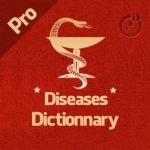
Diseases Dictionary Offline: Pro
Medical and Education
App
Completely Offline medical dictionary app containing medical disorders & diseases with detailed...

Diabetes Passport
Medical and Health & Fitness
App
A new beautiful iOS 7 optimized tool for monitoring Blood Sugar (Glucose), Meals and Insulin (basal,...
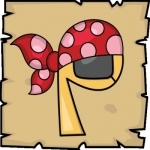
Patching Pirate
Medical and Games
App
"Fantastic New Pirate Themed App to Assist Patching For Amblyopia" This is a world first app aimed...
